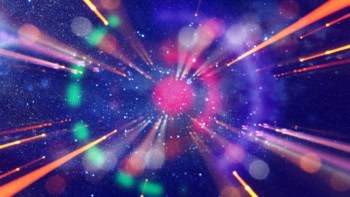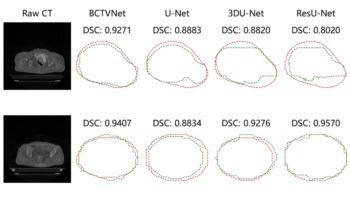Powerful computers are now allowing cosmologists to solve Einstein’s frighteningly complex equations of general relativity in a cosmological setting for the first time. Tom Giblin, James Mertens and Glenn Starkman describe how this new era of simulations could transform our understanding of the universe
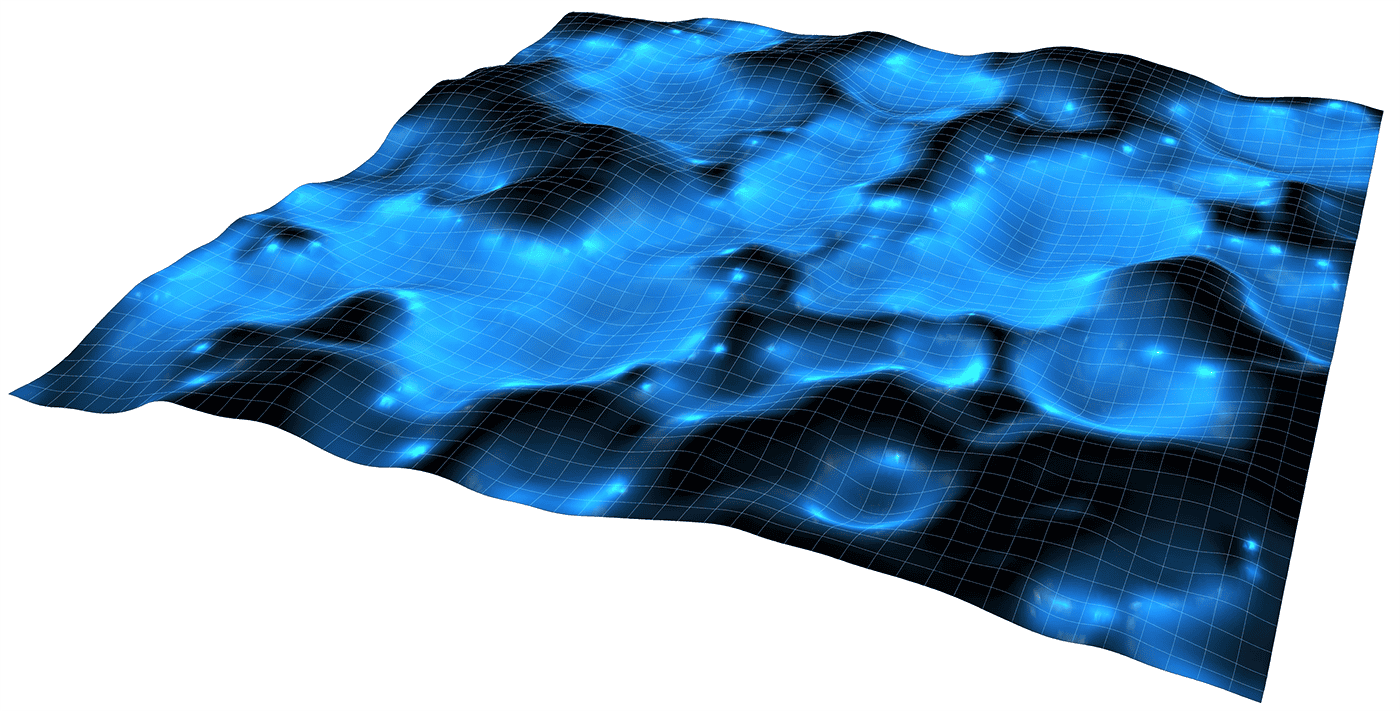
From the Genesis story in the Old Testament to the Greek tale of Gaia (Mother Earth) emerging from chaos and giving birth to Uranus (the god of the sky), people have always wondered about the universe and woven creation myths to explain why it looks the way it does. One hundred years ago, however, Albert Einstein gave us a different way to ask that question. Newton’s law of universal gravitation, which was until then our best theory of gravity, describes how objects in the universe interact. But in Einstein’s general theory of relativity, space–time (the marriage of space and time) itself evolves together with its contents. And so cosmology, which studies the universe and its evolution, became at least in principle a modern science – amenable to precise description by mathematical equations, able to make firm predictions, and open to observational tests that could falsify those predictions.
Our understanding of the mathematics of the universe has advanced alongside observations of ever-increasing precision, leading us to an astonishing contemporary picture. We live in an expanding universe in which the ordinary material of our everyday lives – protons, neutrons and electrons – makes up only about 5% of the contents of the universe. Roughly 25% is in the form of “dark matter” – material that behaves like ordinary matter as far as gravity is concerned, but is so far invisible except through its gravitational pull. The other 70% of the universe is something completely different, whose gravity pushes things apart rather than pulling them together, causing the expansion of the universe to accelerate over the last few billion years. Naming this unknown substance “dark energy” teaches us nothing about its true nature.
Now, a century into its work, cosmology is brimming with existential questions. If there is dark matter, what is it and how can we find it? Is dark energy the energy of empty space, also known as vacuum energy, or is it the cosmological constant, Λ, as first suggested by Einstein in 1917? He introduced the constant after mistakenly thinking it would stop the universe from expanding or contracting, and so – in what he later called his “greatest blunder” – failed to predict the expansion of the universe, which was discovered a dozen years later. Or is one or both of these invisible substances a figment of the cosmologist’s imagination and it is general relativity that must be changed?
At the same time as being faced with these fundamental questions, cosmologists are testing their currently accepted model of the universe – dubbed ΛCDM – to greater and greater precision observationally. (CDM indicates the dark-matter particles are cold because they must move slowly, like the molecules in a cold drink, so as not to evaporate from the galaxies they help bind together.) And yet, while we can use general relativity to describe how the universe expanded throughout its history, we are only just starting to use the full theory to model specific details and observations of how galaxies, clusters of galaxies and superclusters are formed and created. How this happens is simple – the equations of general relativity aren’t.
Horribly complex
While they fit neatly onto a T-shirt or a coffee mug (see below), Einstein’s field equations are horrible to solve even using a computer. The equations involve 10 separate functions of the four dimensions of space and time, which characterize the curvature of space–time in each location, along with 40 functions describing how those 10 functions change, as well as 100 further functions describing how those 40 changes change, all multiplied and added together in complicated ways. Exact solutions exist only in highly simplified approximations to the real universe. So for decades cosmologists have used those idealized solutions and taken the departures from them to be small perturbations – reckoning, in particular, that any departures from homogeneity can be treated independently from the homogeneous part and from one another.
This “first-order perturbation theory” has taught us a lot about the early development of cosmic structures – galaxies, clusters of galaxies and superclusters – from barely perceptible concentrations of matter and dark matter in the early universe. The theory also has the advantage that we can do much of the analysis by hand, and follow the rest on computer. But to track the development of galaxies and other structures from after they were formed to the present day, we’ve mostly reverted to Newton’s theory of gravity, which is probably a good approximation.
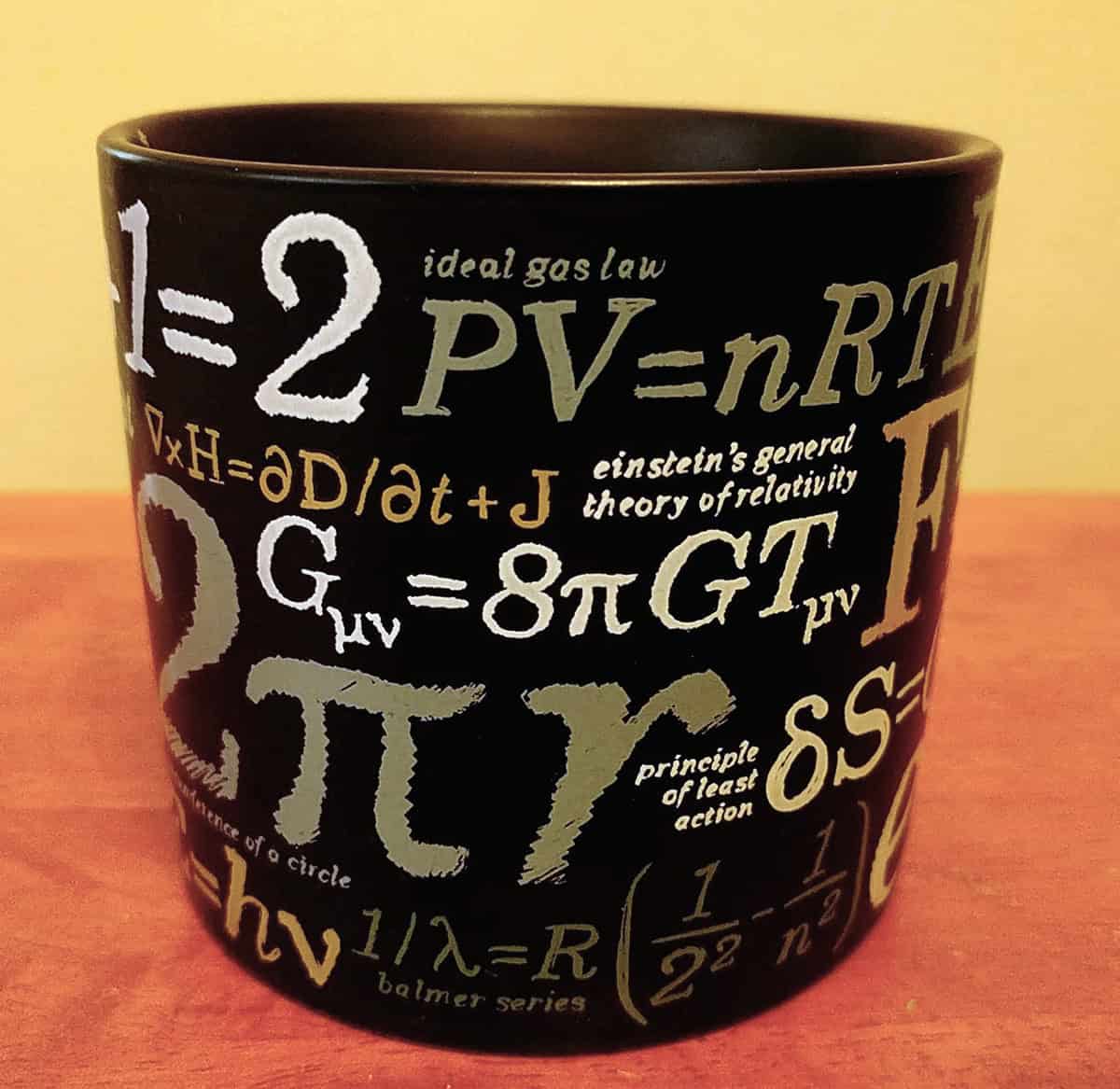
To make progress, we will need to improve on first-order perturbation theory, which treats cosmic structures as independent entities that are affected by the average expansion of the universe, but neither alter the average expansion themselves, nor influence one another. Unfortunately, higher-order perturbation theory is much more complicated – everything affects everything else. Indeed, it’s not clear there is anything to gain from using these higher-order approximations rather than “just solving” the full equations of general relativity instead.
Improving the precision of our calculations – how well we think we know the answer – is one thing, as discussed above. But the complexity of Einstein’s equations has made us wonder just how accurate the perturbative description really is. In other words, it might give us answers, but are they the right ones? Nonlinear equations, after all, can have surprising features that appear unexpectedly when you solve them in their full glory, and it is hard to predict surprises. Some leading cosmologists, for example, claim that the accelerating expansion of the universe, which dark energy was invented to explain, is caused instead by the collective effects of cosmic structures in the universe acting through the magic of general relativity. Other cosmologists argue this is nonsense.
Computers are finally becoming fast enough that modelling the universe using the full power of general relativity – without the traditional approximations – is not such a crazy prospect
The only way to be sure is to use the full equations of general relativity. And the good news is that computers are finally becoming fast enough that modelling the universe using the full power of general relativity – without the traditional approximations – is not such a crazy prospect. With some hard work, it may finally be feasible over the next decade.
Computers to the rescue
Numerical general relativity itself is not new. As far back as the late 1950s, Richard Arnowitt, Stanley Deser and Charles Misner – together known as ADM – laid out a basic framework in which space–time could be carefully separated into space and time – a vital first step in solving general relativity with a computer. Other researchers also got in on the act, including Thomas Baumgarte, Stuart Shapiro, Masaru Shibata and Takashi Nakamura, who made important improvements to the numerical properties of the ADM system in the 1980s and 1990s so that the dynamics of systems could be followed accurately over long enough times to be interesting.
Other techniques for obtaining such long-time stability were also developed, including one imported from fluid mechanics. Known as adaptive mesh refinement, it allowed scarce computer memory resources to be focused only on those parts of problems where they were needed most. Such advances have allowed numerical relativists to simulate with great precision what happens when two black holes merge and create gravitational waves – ripples in space–time. The resulting images are more than eye candy; they were essential in allowing members of the US-based Laser Interferometer Gravitational-Wave Observatory (LIGO) collaboration to announce last year that they had directly detected gravitational waves for the first time.
By modelling many different possible configurations of pairs of black holes – different masses, different spins and different orbits – LIGO’s numerical relativists produced a template of the gravitational-wave signal that would result in each case. Other researchers then compared those simulations over and over again to what the experiment had been measuring, until the moment came when a signal was found that matched one of the templates. The signal in question was coming to us from a pair of black holes a billion light-years away spiralling into one another and merging to form a single larger black hole.
General relativity offers at least one big advantage over Newtonian gravity – it is local
Using numerical relativity to model cosmology has its own challenges compared to simulating black-hole mergers, which are just single astrophysical events. Some qualitative cosmological questions can be answered by reasonably small-scale simulations, and there are state-of-the-art “N-body” simulations that use Newtonian gravity to follow trillions of independent masses over billions of years to see where gravity takes them. But general relativity offers at least one big advantage over Newtonian gravity – it is local.
The difficulty with calculating the gravity experienced by any particular mass in a Newtonian simulation is that you need to add up the effects of all the other masses. Even Isaac Newton himself regarded this “action at a distance” as a failing of his model, since it means that information travels from one side of the simulated universe to the other instantly, violating the speed-of-light limit. In general relativity, however, all the equations are “local”, which means that to determine the gravity at any time or location you only need to know what the gravity and matter distribution were nearby just moments before. This should, in other words, simplify the numerical calculations.
Recently, the three of us at Kenyon College and Case Western Reserve University showed that the cosmological problem is finally becoming tractable (Phys. Rev. Lett. 116 251301 and Phys. Rev. D 93 124059). Just days after our paper appeared, Eloisa Bentivegna at the University of Catania in Italy and Marco Bruni at the University of Portsmouth, UK, had similar success (Phys. Rev. Lett. 116 251302). The two groups each presented the results of low-resolution simulations, where grid points are separated by 40 million light-years, with only long-wavelength perturbations. The simulations followed the universe for only a short time by cosmic standards – long enough only for the universe to somewhat more than double in size – but both tracked the evolution of these perturbations in full general relativity with no simplifications or approximations whatsoever. As the eminent Italian cosmologist Sabino Matarese wrote in Nature Physics, “the era of general relativistic numerical simulations in cosmology ha[s] begun”.
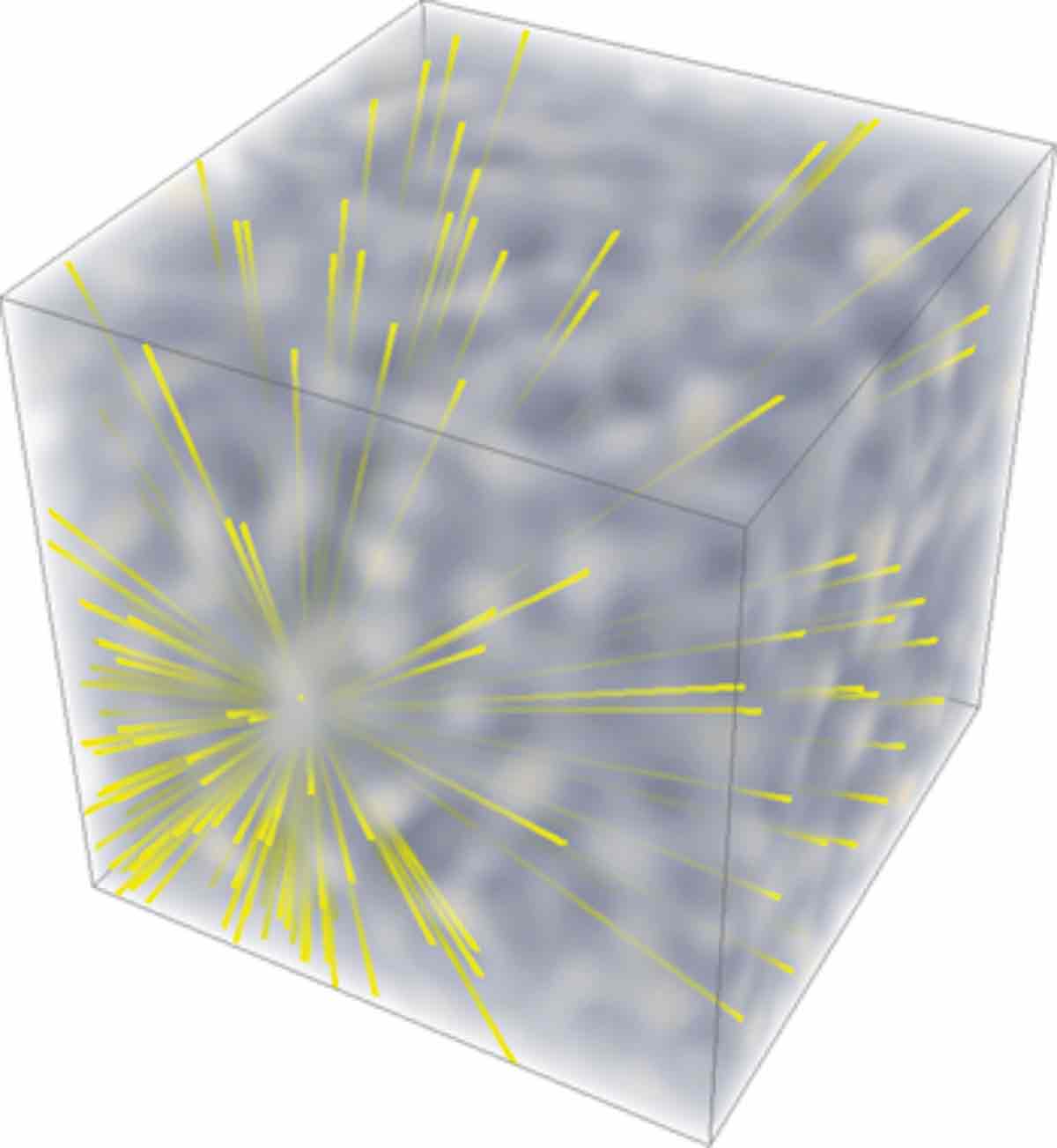
These preliminary studies are still a long way from competing with modern N-body simulations for resolution, duration or dynamic range. To do so will require advances in the software so that the code can run on much larger computer clusters. We will also need to make the code more stable numerically so that it can model much longer periods of cosmic expansion. The long-term goal is for our numerical simulations to match as far as possible the actual evolution of the universe and its contents, which means using the full theory of general relativity. But given that our existing simulations using full general relativity have revealed no fluctuations driving the accelerated expansion of the universe, it appears instead that accelerated expansion will need new physics – whether dark energy or a modified gravitational theory.
Both groups also observe what appear to be small corrections to the dynamics of space–time when compared with simple perturbation theory. Bentivegna and Bruni studied the collapse of structures in the early universe and suggested that they appear to coalesce somewhat more quickly than in the standard simplified theory.
Future perfect
Drawing specific conclusions about simulations is a subtle matter in general relativity. At the mathematical heart of the theory is the principle of “co-ordinate invariance”, which essentially says that the laws of physics should be the same no matter what set of labels you use for the locations and times of events. We are all familiar with milder versions of this symmetry: we wouldn’t expect the equations governing basic scientific laws to depend on whether we measure our positions in, say, New York or London, and we don’t need new versions of science textbooks whenever we switch from standard time to daylight savings time and back. Co-ordinate invariance in the context of general relativity is just a more extreme version of that, but it means we must ensure that any information we extract from our simulations does not depend on how we label the points in our simulations.
Our Ohio group has taken particular care with this subtlety by sending simulated beams of light from distant points in the distant past at the speed of light through space–time to arrive at the here and now. We then use those beams to simulate observations of the expansion history of our universe. The universe that emerges exhibits an average behaviour that agrees with a corresponding smooth, homogeneous model, but with inhomogeneous structures on top. These additional structures contribute to deviations in observable quantities across the simulated observer’s sky that should soon be accessible to real observers.
Creating codes that are accurate and sensitive enough to make realistic predictions will require us to study larger volumes of space
This work is therefore just the start of a journey. Creating codes that are accurate and sensitive enough to make realistic predictions for future observational programmes – such as the all-sky surveys to be carried out by the Large Scale Synoptic Telescope or the Euclid satellite – will require us to study larger volumes of space. These studies will also have to incorporate ultra-large-scale structures some hundreds of millions of light-years across as well as much smaller-scale structures, such as galaxies and clusters of galaxies. They will also have to follow these volumes for longer stretches of time than is currently possible.
All this will require us to introduce some of the same refinements that made it possible to predict the gravitational-wave ripples produced by a merging black hole, such as adaptive mesh refinement to resolve the smaller structures like galaxies, and N-body simulations to allow matter to flow naturally across these structures. These refinements will let us characterize more precisely and more accurately the statistical properties of galaxies and clusters of galaxies – as well as the observations we make of them – taking general relativity fully into account. Doing so will, however, require clusters of computers with millions of cores, rather than the hundreds we use now.
These improvements to code will take time, effort and collaboration. Groups around the world – in addition to the two mentioned – are likely to make important contributions. Numerical general-relativistic cosmology is still in its infancy, but the next decade will see huge strides to make the best use of the new generation of cosmological surveys that are being designed and built today. This work will either give us increased confidence in our own scientific genesis story – ΛCDM – or teach us that we still have a lot more thinking to do about how the universe got itself to where it is today.

